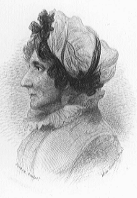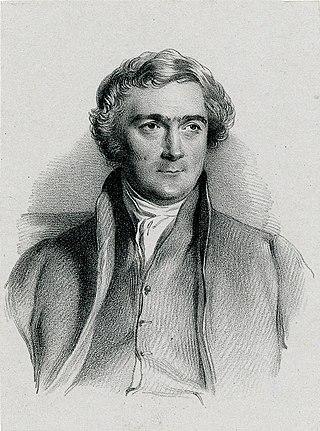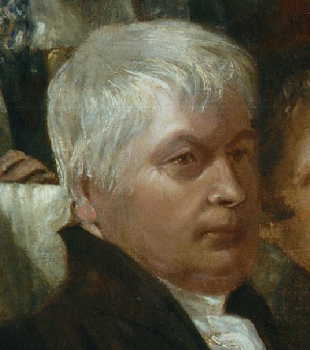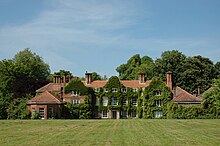
Anna Laetitia Barbauld was a prominent English poet, essayist, literary critic, editor, and author of children's literature. A prominent member of the Blue Stockings Society and a "woman of letters" who published in multiple genres, Barbauld had a successful writing career that spanned more than half a century.

Elizabeth Fry, sometimes referred to as Betsy Fry, was an English prison reformer, social reformer, philanthropist and Quaker. Fry was a major driving force behind new legislation to improve the treatment of prisoners, especially female inmates, and as such has been called the "Angel of Prisons". She was instrumental in the 1823 Gaols Act which mandated sex-segregation of prisons and female warders for female inmates to protect them from sexual exploitation. Fry kept extensive diaries, in which the need to protect female prisoners from rape and sexual exploitation is explicit.

The University of East Anglia (UEA) is a public research university in Norwich, England. Established in 1963 on a 320-acre (130-hectare) campus west of the city centre, the university has four faculties and twenty-six schools of study. The university is a leading member of Norwich Research Park which has one of Europe's largest concentrations of researchers in the fields of agriculture, genomics, health and the environment. It is one of five BBSRC funded research campuses with thirty businesses, four independent research institutes and a teaching hospital on site.

Amelia Opie was an English author who published numerous novels in the Romantic period up to 1828. A Whig supporter and Bluestocking, Opie was also a leading abolitionist in Norwich, England. Hers was the first of 187,000 names presented to the British Parliament on a petition from women to stop slavery.

Prince William Frederick, Duke of Gloucester and Edinburgh, was a great-grandson of King George II of Great Britain and the nephew and son-in-law of King George III. He was the grandson of both Frederick, Prince of Wales, and Edward Walpole. Prince William married Princess Mary, the fourth daughter of George III.

Joseph John Gurney was a banker in Norwich, England and a member of the Gurney family of that city. He became an evangelical minister of the Religious Society of Friends (Quakers), whose views and actions led, ultimately, to a schism among American Quakers.

Sir Thomas Fowell Buxton, 1st Baronet Buxton of Belfield and Runton was an English Member of Parliament, brewer, abolitionist and social reformer. He married Hannah Gurney, whose sister became Elizabeth Fry, and became a great friend of her father Joseph Gurney and the extended Gurney family.

Percy Lubbock, CBE was an English man of letters, known as an essayist, critic and biographer. His controversial book The Craft of Fiction gained influence in the 1920s.

Anna Gurney (1795–1857) was an English scholar, philanthropist, geologist and a member of the Gurney family of Norfolk.

Samuel Gurney was an English banker and philanthropist from the Gurney family of Norwich. He should not be confused with his second son, Samuel (1816–1882), also described as banker and philanthropist, and a Member of Parliament.

John Taylor was an entrepreneur, poet and composer of both secular (political) songs and hymns from Norwich, England.

Samuel Hoare Jr was a wealthy British Quaker banker and abolitionist born in Stoke Newington, then to the north of London in the county of Middlesex. From 1790, he lived at Heath House on Hampstead Heath. He was one of the twelve founding members of the Society for the Abolition of the Slave Trade.

The Martineau family is an intellectual, business and political dynasty associated first with Norwich and later also London and Birmingham, England. Many members of the family have been knighted. Many family members were prominent Unitarians; a room in London's Essex Hall, the headquarters building of the British Unitarians, was named after them. Martineau Place in Birmingham's central business district was named in their honour.
Daniel Gurney (1791–1880), was an English banker and antiquary from the Gurney family of Norwich.

Louisa Gurney Hoare was an English diarist and writer on education, and a member of the Gurney family. She was concerned particularly with standards of education.
The Gurneys were an influential family of English Quakers, who had a major part in the development of Norwich, England. They established Gurney's Bank in 1770, which merged into Barclays Bank in 1896. A number of family members were abolitionists. Members of the family still live in the United Kingdom.
John Gurney was an English banker and member of the Gurney family of Norwich. Besides his role as a partner in Gurney's bank he is notable as the father of the social reformers Elizabeth Fry and Joseph John Gurney, the writer Louisa Hoare and the banker Samuel Gurney.
John Gurney (1845–1887), a member of the renowned Gurney banking family of Norfolk, was mayor of Norwich.

Susannah Taylor or Susannah Cook - also known by the sobriquet Madame Roland or Dame Roland - was a British socialite and correspondent.

Priscilla Buxton was a British slavery abolitionist. She was co-secretary of the London Female Anti-Slavery Society. In 1833 a petition of 187,000 women's signatures were presented to parliament to end slavery. The first two names were Amelia Opie and Priscilla Buxton.
















